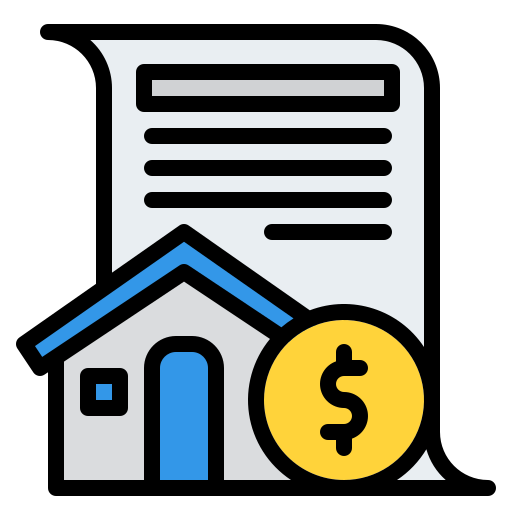
Home Loan
Transform your ideal home into a reality through our premier home loan solutions. Janakpuri Homes has established partnerships with a variety of banks, offering seamless and convenient mortgage loan options. Access home credit loans accompanied by a range of advantages, including competitive housing loan interest rates and reduced EMIs, allowing you to distribute your payments over an extended period.
Check Home Loan Eligibility
Empanneled Banks

8.95-9.85%
Upto 0.5%

8.5%
Upto 0.5%

9.25% - 10.05%
0.5%

9.3%
0.5%

8.75% - 14%
0.05%
Advantages and Features of Home Loans
A home loan offers an array of advantages to borrowers, including reduced interest rates, tax incentives, flexible repayment schedules, and more.
Favorable Interest Rates – Home loans are provided at comparatively lower interest rates than other types of loans. Opting for a home loan is more beneficial when aiming to acquire your desired property. Lenders offer home loans at attractive interest rates to minimize the risk of missed payments and outstanding debts.
Thorough Property Verification – A notable advantage of home financing is that the bank conducts due diligence to verify the property’s legitimacy, ensuring your peace of mind. During the assessment of loan documents, the bank performs legal checks to prevent fraud. This process safeguards your interests and alerts you to any potential risks associated with the property.
Tax Benefits Through Home Loans – Homeowners with mortgages can avail themselves of income tax benefits. One significant perk of obtaining a property loan is the income tax deduction available for the annual interest paid. The interest amount paid is deducted from the total income tax liability.
Flexible Repayment Durations – Differentiating itself from other loan types, a home loan offers flexible repayment periods. You can select a repayment tenure that suits your convenience, extending up to 25 to 30 years. With an elongated repayment period, monthly installments decrease, alleviating the EMI burden.
Home Loan Balance Transfer Facility – Home loans provide the option to transfer the outstanding loan balance from one lender to another. This decision could arise due to reasons like differing interest rates, service charges, or an unsatisfactory customer experience.
Capital Appreciation – Historical real estate data indicates a consistent appreciation in property values over the past decade. Real estate properties have exhibited substantial capital growth, surpassing the interest paid. This scenario proves advantageous for property owners, enabling them to sell properties at a profit.
Home Loan Overview
A home loan, also known as a mortgage loan, is a specified sum of money borrowed from financial institutions and banks to facilitate the purchase of a property. Home loans are applicable for acquiring apartments, new houses, and land parcels. In the case of renovating, extending, or repairing an existing property, a home loan designed for renovation purposes can be chosen. It’s essential to meticulously evaluate the home loan interest rate while opting for such financial products to ensure that the monthly EMI doesn’t become a burden.
Escalating real estate costs prompt individuals to secure a mortgage in order to realize their homeownership aspirations. The pivotal feature of a home loan is that, upon obtaining it, the lender retains the property as collateral. To attain complete ownership of the property, you’re required to repay the loan amount through monthly installments. The calculation of the home loan Equated Monthly Installment (EMI) is conducted by the lender using a home loan calculator or similar tools.
Home Loan Benefits
The reimbursement of a home loan encompasses two components: the repayment of the borrowed principal sum and the interest accrued. These constituents are recognized during the filing of income tax returns, where they are eligible for deductions as either home loan interest deductions or tax deductions.
Under Section 80 EEA, individuals are entitled to assert tax advantages for the interest portion paid on their housing loans. This provision extends tax benefits of up to INR 1.5 lakhs to home loan recipients concerning the interest they are obligated to pay
Home Loan Eligibility Criteria
Financial institutions, including banks and finance companies, maintain predefined prerequisites for home loan eligibility. These criteria are established to ensure a streamlined process for loan applicants. In addition to these prerequisites, financial institutions evaluate an applicant’s credit history, assessing their ability to repay the loan and their creditworthiness.
The following factors are taken into account for home loan eligibility:
- Age of the applicant, typically ranging from 21 to 65 years
- Employment status, whether salaried or self-employed
- Annual income
- Availability of collateral security
- Assets, financial stability, and occupational continuity
- Residency status, indicating whether the applicant is Indian or a Non-Resident Indian (NRI)
Reasons of Home Loan Rejection
Outlined below are several factors that can lead to the rejection of a home loan application:
- Outstanding dues and existing debts that are unpaid.
- Presence of the applicant’s address on the defaulter’s list.
- Age of the applicant falling outside the acceptable range.
- Credit score below 600.
- Multiple instances of loan applications being denied.
- Frequent changes in employment.
- Irregular repayment history for existing debts.
- Insufficient documentation provided.
How to Close Existing Home Loan?
A home loan can be finalized in two ways: upon completing the full repayment tenure, where the entire loan amount has been successfully repaid, or through a process known as foreclosure.
When your repayment tenure concludes, you simply need to visit the lender and complete the necessary paperwork to formally close the loan. Following this, the lender will furnish you with a loan closure certificate and return your property documents, which were held as collateral during the loan approval stage.
If you opt to settle the loan amount before the designated tenure ends, also referred to as loan foreclosure, you will need to cover the applicable foreclosure charges. Upon settling the outstanding sum along with the foreclosure charges, your financial obligations will be resolved. The bank will initiate the foreclosure procedure and provide you with a loan closure certificate.
Types of Home Loan
A housing loan serves a broader purpose beyond just acquiring a house. There exist various categories of home loans, each associated with distinct interest rates.
Home Construction Loan – For those who prefer building their own residences, a home construction loan is suitable. The loan amount is determined by the overall construction expenses, property age, and any supplementary costs. The flexibility of receiving the entire amount upfront or in installments is an advantage. Interest rates typically range from 6.85% to 9.50%, contingent on the loan amount.
Home Loan – A home loan is a standard option wherein banks extend financing of up to 85% of the property’s cost, with interest rates ranging between 9.85% and 11.25%. This type of loan is offered by most lending institutions.
Land Purchase Loan – Available from banks and NBFCs, this loan aids land acquisition, with financing of up to 85% of the land’s value. The interest rate, ranging from 6.75% to 12.09%, is influenced by factors like location and credit score. Investing in land is advantageous, as it can serve as the foundation for future home construction, and land purchase loans often feature lower interest rates.
Home Improvement Loan – For property enhancement, a home improvement loan proves useful. It covers various renovation aspects such as repairs, painting, interior updates, waterproofing, and more, enhancing the property’s value and appeal.
Required Home Loan Documents
To avail of a home loan with utmost ease, you need to prepare the below depicted documents:
Documents for Identity Proof
- PAN and Aadhar Card
- Applicant's Passport
- Voter ID Card
- Driving Licence
Documents for Address Proof
- Utility bills (electricity or telephone bill)
- Identity proof that contain address, like Aadhaar Card
- Salary slips of last 6 months and Form 16
- Bank account statements
- Income proof and employment proof
Other Documents
- Passport-size photographs of the applicant
- For self-employed, business continuity proof will be required (5 years)
Need Loan Assistance?

Frequenty Asked Questions
The EMI for a Rs. 20 lakh home loan will depend upon the interest rate offered by the lender and loan repayment tenure.
There are multiple premium banks (both private and public) in India offering attractive home loans and associated products. Some of them include HDFC, ICICI, Axis, and SBI.
With a salary of Rs. 30,000, you can avail of a home loan of upto Rs. 20.50 lakh based upon your credibility.
The EMI for a Rs. 10 lakh home loan will fall somewhere between Rs. 8,000 and Rs. 10,000, based on chosen tenure and applicable interest rate.
A credit score above 700 is mandatory to avail of a home loan at an attractive interest rate.
You can either compute the EMI through the mathematical formula i.e. EMI = {P x (R/100) x (1+R/100)^n} / {(1+R/100) ^n-1} or via home loan EMI calculator.
Numerous banks and finance providers offer home loans without payslips. However, you will have to provide bank statements, income proofs and PAN card details.
Yes, it is recommended to pay off your dues before applying for a home loan for easy approval.
Yes, a home loan is a tax-saving deduction. It is part of Section 80C of the Income Tax Act that states the borrower is entitled to a tax deduction, notably for the amount being paid as prepayment of the mortgage loan. An individual can claim up to Rs. 1.5 lakh as tax deductions.

